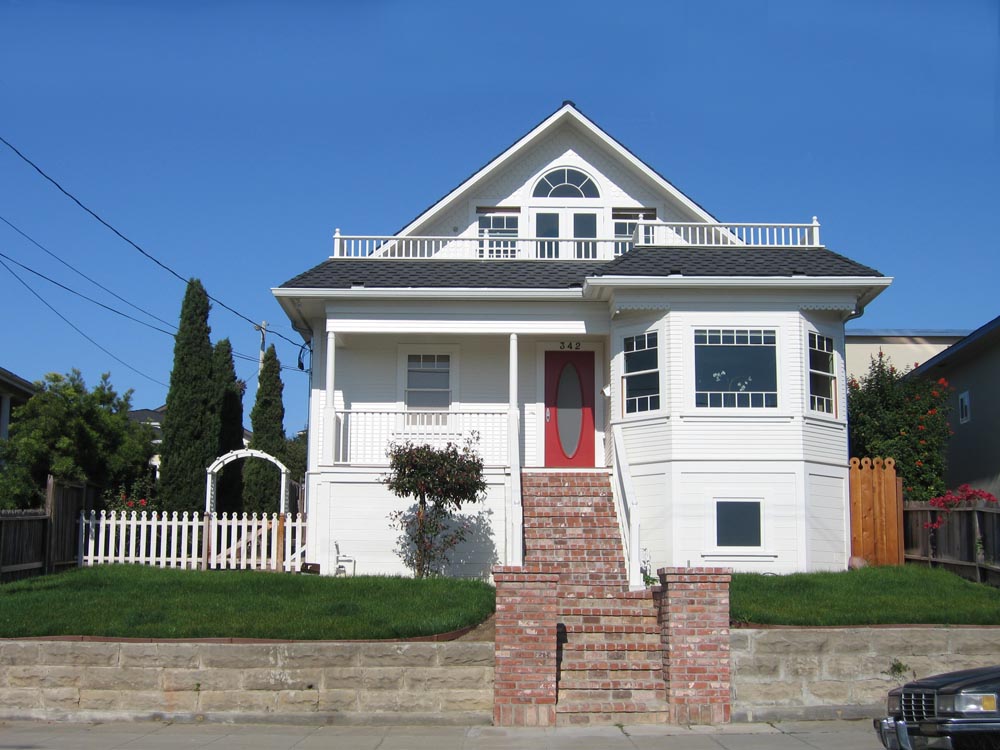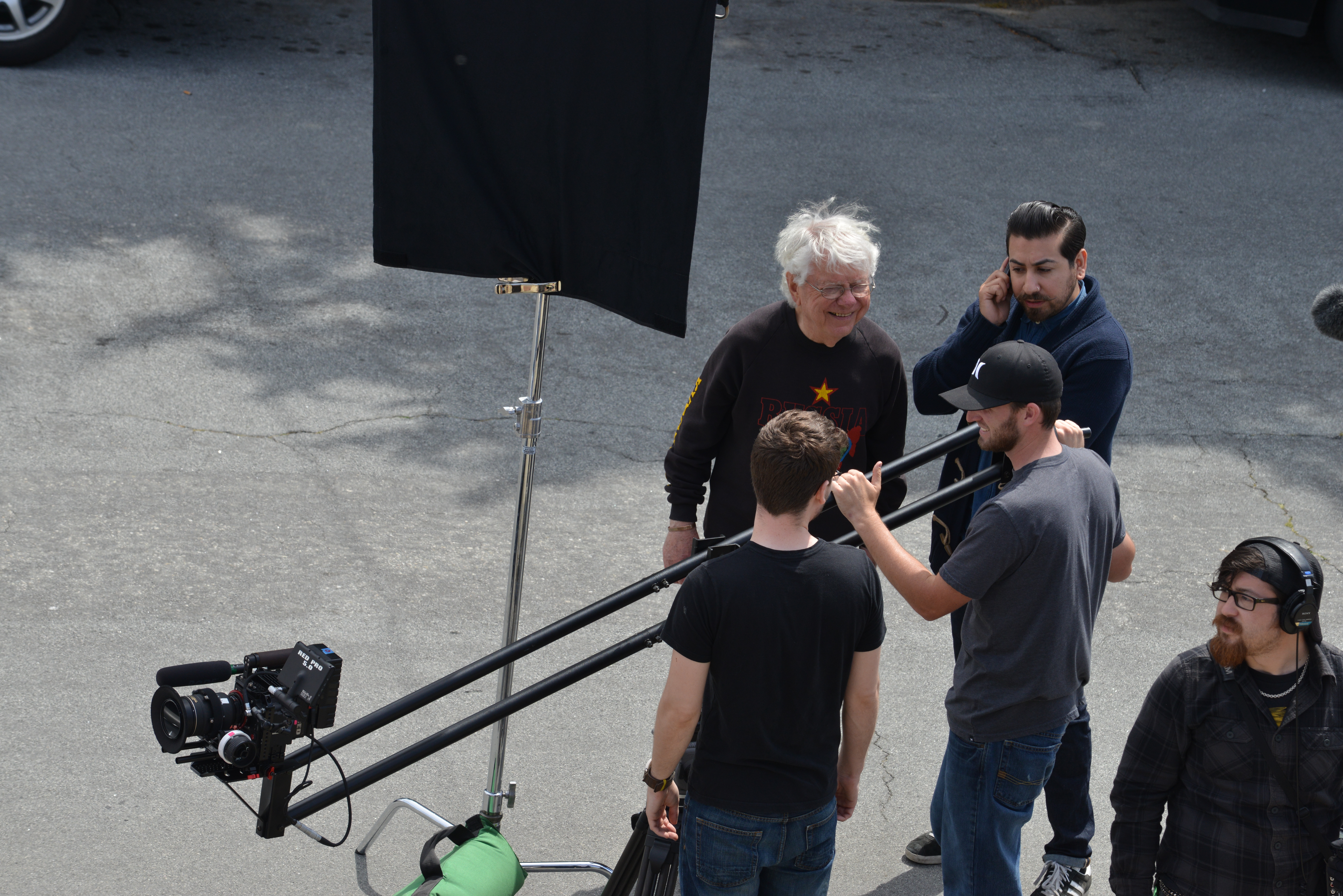FILMED APRIL 2013
For me the first major hurdle on any show I direct is the opening. This was true when, fresh out of the Pasadena Playhouse, I directed theatre, and it was something I recognized very early in my career behind the camera as being even more critical when directing television. People sitting in their living rooms in front of their tv sets weren’t like theatre patrons. In those pre-cable days they hadn’t dished out money to view what was on their small screens; they didn’t have a financial investment in the evening. If their interest wasn’t grabbed early, there was nothing stopping them from getting up and changing channels. This was in the early days of television before remotes were invented; they made it even easier to turn the dial in search of something more entertaining.
The opening of THE RIGHT REGRETS presented an intriguing opportunity to create a grab-the-attention beginning for our drama …
ST. STRATHCONA STREET, VANCOUVER, CANADA – DAY
A quiet neighborhood. Across the street from one of the charming homes in a parked Honda a silhouetted WOMAN shields herself with a road map as she looks over the top at the row of tidy houses with their well trimmed yards. CHARLES WICKHAM (50’s) emerges from his home carrying a small package. As he reaches the sidewalk, if he were Curly in Oklahoma! he would burst into song, singing “Oh, what a beautiful morning,” but he’s not Curly so he turns and in his quiet professorial manner heads toward the village. Woman exits the car and follows Charles, keeping a respectable distance. (Her face is not visible)
… and I knew exactly how I was going to do it. But first we had to secure the street and the house, and on our independent film budget we weren’t going to be going to Vancouver, Canada, to find them. There is a charming section of Monterey called Spaghetti Hill. My friends, David and Lilliana Potigian, have a lovely white house there that I have long admired, and I knew without asking that it would be available.

But I was conflicted. The steps from the sidewalk to the first landing seemed to me to be a little steep, and there is no hand railing. I was fearful that could cause a problem in the staging I had planned for the final sequence in the film, so producer Marlyn Mason and I hopped in my Green Rover and set out to find another house. We zigzagged our way through Spaghetti Hill, up one street and down the next. For openers the streets we traversed were narrower than the street of the Potigian house, which would make filming more difficult. And nowhere did I see a house as attractive as the Potigians’ or any that provided an interesting setting for my planned staging. I finally asked myself a question: since the activity of that final sequence was something that could actually occur, what would real life participants do? Would they say, “Sorry, the stairs are too steep and there is no hand railing. Goodbye.” No, they would not. They would adapt and manage. I wasn’t sure just how I would adapt and manage, but I knew that when the time came, I would. As I anticipated, David and Lilliana graciously, even eagerly, offered their home to be filmed in THE RIGHT REGRETS.
With that choice made, our staff was assigned the task of securing the necessary permit from the city of Monterey. My request in addition to permission to film was for eight cleared parking spaces in front of the Potigian house, four on their side of the street and four across the street. That took considerably longer. I was told that calls had been placed to the city offices, but those calls had not been returned; but because our staff was not based here on the Monterey peninsula (a factor that negatively affected all of our pre-production activity), I was not privy to the day-to-day negotiations. Eventually, as we drew near to our start date to begin filming, I was told we had the permit and the cleared four parking spaces directly in front of the Potigian house, but permit for the four spaces across the street was denied. The reason given was that side of the street was almost entirely apartment houses, and those spaces could not be cleared. That presented a major problem. The staging for the sequence required that the woman waiting for Charles Wickham to exit be seated in a car parked across the street from his home. I lowered my request to clear a single space. That too was denied, and there were also some restrictions issued with the permit. We were not to film in the street or on the sidewalks.
I don’t think I would be overstating when I say 98% of the film I shot in my 26 years directing was with the camera mounted on a crab dolly. The crab dolly could roll forward, backward and sideways, the camera could pan right and left, tilt up and tilt down, be raised and be lowered, and with a zoom lens attached its capabilities were endless.

It was exactly what I needed for my planned opening shot in the film. But rental for a crab dolly was not cheap. I explained the shot I wanted to director of photography Brandon Fraley, and he assured me we could make the shot with the camera mounted on a Jib.

Since I was new to the world of independent film making, I smilingly agreed.
We arrived at the Potigian house early on our fourth day of filming to find the four parking spaces in front of the house cleared as agreed to in our permit, but as feared all of the parking spaces across the street were filled, including the space we needed to park our picture car for the opening shot. A couple members of the crew were delegated the task of knocking on doors to try to find the owner of the car. What they discovered was the car belonged to a visitor, but no one knew where the visitor was visiting. As it turned out, there was a temporary escape from that impossible predicament. Directly opposite the Potigian house was a wide driveway for an apartment house, and it was just in front of the space currently occupied by that unknown visitor. We could park our picture car there for our early morning sequence, but we had to have the space behind it for an afternoon sequence. We had to pray that by the time we got to that sequence in the afternoon, the owner of the car would show up. We parked our picture car, lined up the shot with the Jib, got lucky as no car needed to enter or exit the driveway, and although it took five takes, we got the shot.
We filmed that on April 5. I had rejected having a monitor on the set to view each take as it was being filmed; I preferred watching the real action, not a screen. That was a mistake. We had no facilities to view dailies each day, so imagine my shock as we began editing on April 24 when I saw that only Maxwell’s feet were seen coming through the door. There I was, two weeks after principal photography had been completed, the company had disbanded, and I was without my opening shot for the film. The following setup that I filmed was the same action of Maxwell coming through the door and down the steps into a close-up.
That was David Potigian, our wonderful set photographer, on the wrong side of the camera. We finally got our shot with Maxwell, and later with an establishing shot of the house to replace the wide shot of the street and some judicious editing, I felt I had an effective opening for our story.
The time-code at the bottom of the screen was provided later so I could prepare the cues for the music composer. By 11:00 am we had completed our morning sequence and had the opening forty-five seconds of our movie in the can; I can’t really say that! It’s no longer in the can; it’s in the computer. The balance of the day was at the same location where we would film the closing sequence – next as …



Ralph, you haven’t lost a thing and at your age it is AMAZING! Love from us.
A TRUE MASTERPIECE SIR RALPH. CAN’T WAIT TO SEE YOUR FILM ON THE BIG
SCREEN. I KNOW YOU WILL BE GETTING A STANDING OVATION. YOU ARE
INDEED, REMARKABLE! WARMEST PERSONAL REGARDS, BUDD BURTON MOSS
You make the film making as interesting as the film itself, Ralph. How lucky to have such a vital and experienced Director..cannot wait to see it..but following your journey is just as much fun. Hats off to you, Ralph!
Thank you my dear friend. And coming from a film critic as “tough” as you, I’m humbled.
There is Ralph Senensky…and then all others.
Love your work in sitcoms, and I’m so grateful for your quotes in my book called SINGLE SEASON SITCOMS. I still see your name often on TV reruns of THE BILL COSBY SHOW and THE COURTSHIP OF EDDIE’S FATHER. Best of luck with your upcoming film, THE RIGHT REGRETS. One of your stars, Marlyn Mason, is a real treasure.
I’d like to quote all the great quotes from all the knowledgeable people and simply add my name. Ralph you are a living legend.
Dear Ralph-
I only have one thing to say: Old school, best school!
If you’ve never worked with Ralph, you’ve simply never worked with a director. Congratulations, Ralph.
Many thanks for some other superb content. Where by in addition might any one obtain that style of information and facts in these an affordable way associated with crafting? I’ve a speech in a few days, and I am with the find these kinds of information and facts.
In my case, I think I find about 2% by Google on my computer. The other 98% I lived.